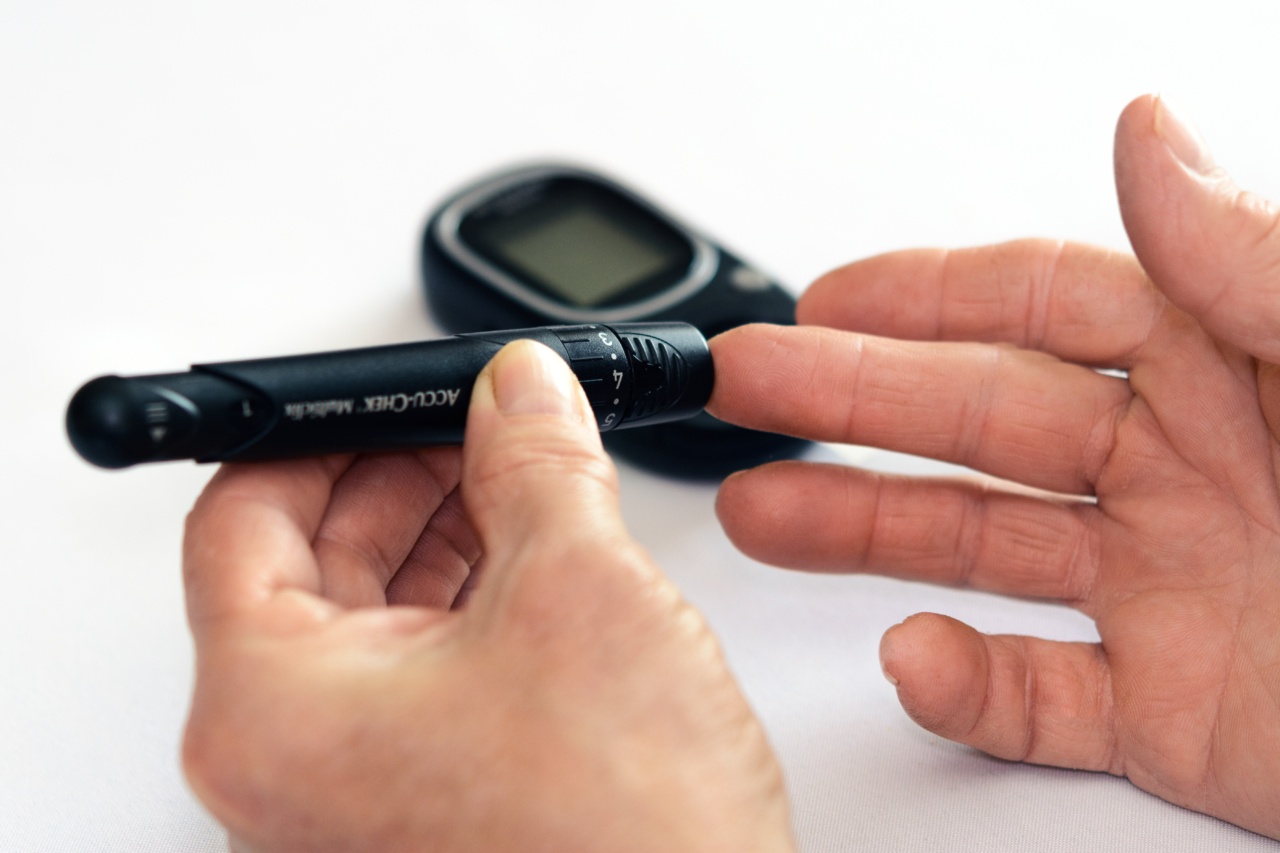Diabetes is a chronic condition that affects millions of people worldwide. It is characterized by high blood sugar levels, which can have serious health consequences if not properly managed.
This article aims to provide essential information about diabetes, including its types, symptoms, causes, risk factors, and treatment options.
Types of Diabetes
There are three main types of diabetes:.
Type 1 Diabetes
Type 1 diabetes, also known as juvenile diabetes or insulin-dependent diabetes, occurs when the body fails to produce insulin. Insulin is a hormone that is necessary for the body to properly regulate blood sugar levels.
Type 1 diabetes usually develops during childhood or adolescence and requires lifelong insulin therapy.
Type 2 Diabetes
Type 2 diabetes is the most common form of diabetes. It occurs when the body either does not produce enough insulin or becomes resistant to its effects.
This type is often associated with lifestyle factors such as obesity, poor diet, and sedentary behavior. Type 2 diabetes can usually be managed with a combination of medication, healthy eating, and regular physical activity.
Gestational Diabetes
Gestational diabetes occurs during pregnancy and affects about 7% of pregnant women. It is characterized by high blood sugar levels that develop during pregnancy in women who have not previously been diagnosed with diabetes.
Gestational diabetes usually resolves after giving birth, but it increases the risk of developing type 2 diabetes later in life.
Symptoms of Diabetes
The symptoms of diabetes can vary depending on the type and severity of the condition. Common symptoms include:.
1. Increased Thirst and Urination
One of the most noticeable symptoms of diabetes is excessive thirst and increased urination. This is a result of the body trying to remove the excess sugar through urine.
2. Unexplained Weight Loss
Rapid and unexplained weight loss can be a sign of undiagnosed diabetes. This occurs when the body is unable to properly use the calories from food and starts breaking down stored fat for energy.
3. Fatigue and Weakness
Feeling tired and weak, even after getting enough rest, is a common symptom of diabetes. High blood sugar levels can interfere with the body’s ability to produce energy.
4. Blurred Vision
Elevated blood sugar levels can cause fluid to be pulled from the lenses of the eyes, resulting in blurred vision. This symptom is usually temporary and resolves once blood sugar is under control.
5. Slow Healing of Wounds
Diabetes can impair the body’s ability to heal wounds. High blood sugar levels can damage blood vessels and affect circulation, making it more difficult for wounds to heal.
Causes and Risk Factors
The exact cause of diabetes is still not fully understood. However, several factors can increase the risk of developing the disease:.
1. Family History
Having a close relative with diabetes, especially a parent or sibling, increases the risk of developing the condition.
2. Obesity
Being overweight or obese significantly increases the risk of developing type 2 diabetes. Excess weight can cause insulin resistance and impair the body’s ability to regulate blood sugar levels.
3. Sedentary Lifestyle
A sedentary lifestyle, characterized by a lack of physical activity, is a major risk factor for type 2 diabetes. Regular exercise helps improve insulin sensitivity and overall blood sugar control.
4. Unhealthy Diet
A diet high in processed foods, sugary beverages, and unhealthy fats can contribute to the development of type 2 diabetes. A diet rich in fruits, vegetables, whole grains, and lean proteins can help lower the risk.
Treatment Options
The treatment of diabetes aims to keep blood sugar levels within a target range to prevent complications. The specific treatment approach may vary depending on the type of diabetes:.
Type 1 Diabetes
People with type 1 diabetes require insulin therapy to survive. Insulin can be injected or delivered through an insulin pump. Regular monitoring of blood sugar levels is essential to adjust insulin doses properly.
Type 2 Diabetes
The treatment of type 2 diabetes often involves lifestyle modifications such as a healthy diet, regular exercise, and weight loss. Medications may be prescribed to help manage blood sugar levels, and in some cases, insulin therapy may be necessary.
Gestational Diabetes
Gestational diabetes is usually managed by adopting a healthy diet and engaging in regular physical activity. In some cases, insulin therapy may be required to control blood sugar levels during pregnancy.
Conclusion
Diabetes is a chronic condition that can have a significant impact on an individual’s health and well-being. It is crucial for everyone to be aware of the different types of diabetes, their symptoms, causes, and potential risk factors.
Early detection and proper management can help prevent complications and lead to a better quality of life for those living with diabetes.




























